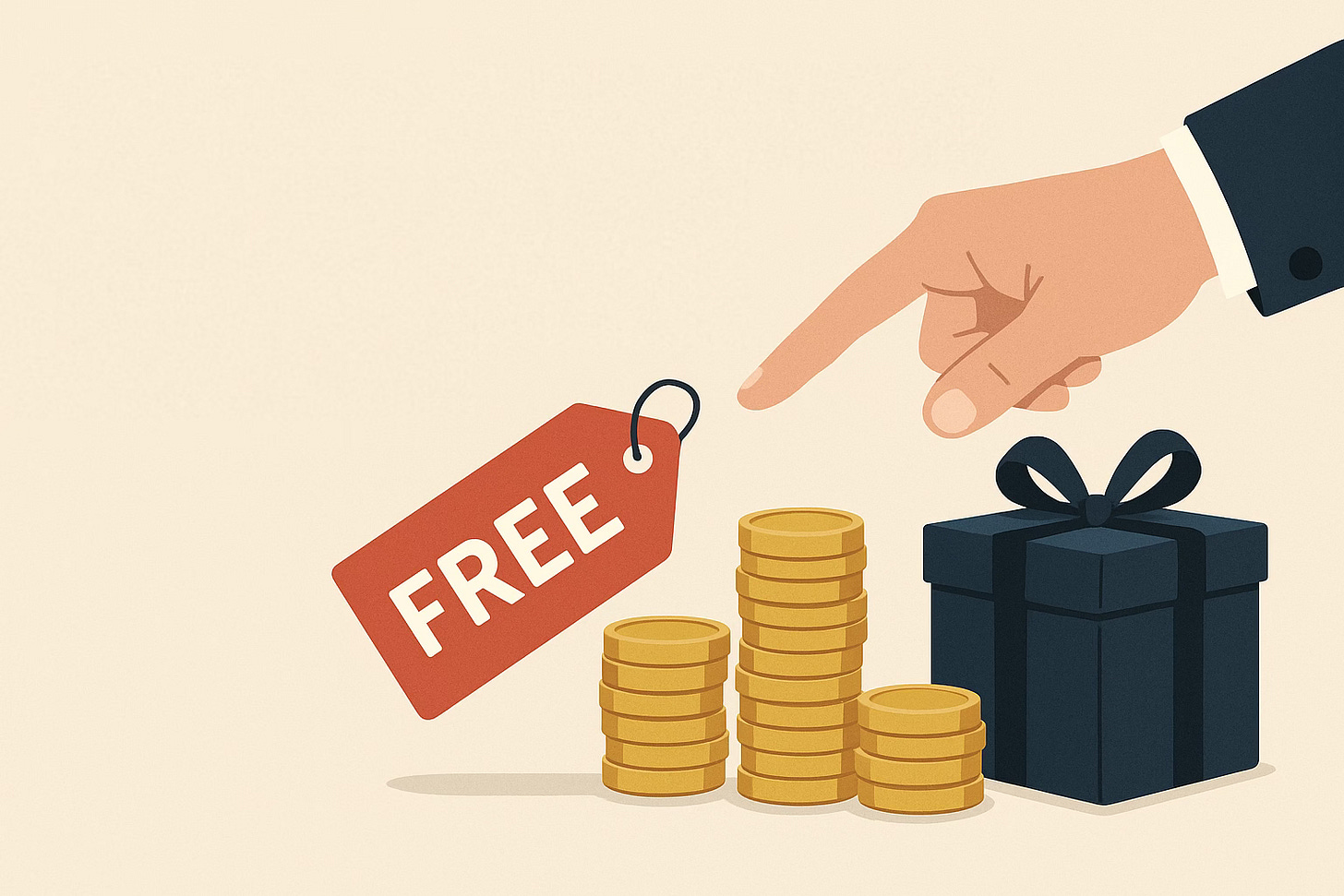We all know the rules of modern online marketing. To build a community, reach new people, you’ve got to offer something first. A lead magnet. Give away value upfront, often in exchange for an email address, and hopefully, turn those freebie seekers into paying customers.
But where’s the line? What do you give away for free, and what do you keep behind a paywall? It’s a question I’ve been wrestling with lately.
The “Free Website” Proposition
I recently encountered an interesting example on LinkedIn. Entrepreneurs were offering to build websites completely for free. Sign up, wait a few days, and they’d deliver a website built from scratch. Their philosophy: this was their lead magnet. Offer a valuable service for free, build trust, and then upsell clients to paid services down the road.
As someone who occasionally builds websites for friends and small businesse (shout-out to my Behance for the full tour), I was intrigued. It made me think: should I do that too? Offer a free website to find more leads for my business? I mean, I could. But should I?
The Danger of Undervaluing Expertise
Then I paused. Yes, today you can build a basic website in a matter of hours. But also experience matters. Years of working on websites and other online stuff have made me more efficient, more knowledgeable about best practices, and better able to deliver a truly effective online presence.
So, should I give that expertise away for free? Wouldn’t that, on the contrary, devalue my services? Wouldn’t offering a high-value product for free actually lower my own value in the long run? I really think so.
Finding the Right Balance: Insight vs. Suspicion
Striking the sweet spot between generous insight and audience skepticism is part art, part science. Give away too little, and readers walk away feeling baited — your “freebie” didn’t move the needle on their problem. Give away too much, and you risk undermining the very value you want to monetize later, or worse, triggering suspicion that there must be a hidden catch.
Here’s how to thread the needle:
Clarify the scope
Be explicit about what your free resource covers — and what it doesn’t. A one-page checklist, a 10-minute video tutorial, or a short ebook should have clearly defined boundaries. That lets readers know exactly what they’ll gain, and what they’ll need to invest in next.Lean into micro-transformations
Aim for a small but meaningful win. For instance, a checklist that cuts your prospect’s steps to writing an email in half, or a template that helps them design a landing page wireframe in one afternoon. When people experience quick results, they trust you more — and they’re naturally curious about what else you can help them achieve.Tell the “why,” not just the “what”
Most freebies dump information. The ones that stick explain why you made each recommendation, what real-world problem it solves, and how it fits into a bigger picture. That narrative layer transforms raw insight into a mini–masterclass, so readers see you as a guide, not just a source of bullet points.Build a logical next step
Every free offering should hint at — or even lightly preview — a paid counterpart. If your ebook teaches five productivity hacks, point to a deeper workshop that expands each hack into a full framework. This establishes a natural progression and softens any perceived “upsell.”Invite feedback and collaboration
Add a brief survey, an email reply call-to-action, or a private community invite. When people share their results or struggles, you deepen the relationship, tailor future content, and show that your interest goes beyond “collecting emails.”
By designing freebies that deliver a tangible outcome, frame their own limits, and open the door to ongoing dialogue, you sidestep both under-delivery and over-exposure. Instead of breeding doubt, your “free” gifts become trust accelerators — fuel for a partnership that can last far beyond that first download.
Show Yourself
One of the best ways, in my opinion, to put the above principles into practice is with a short, free ebook. It’s a great way to:
Introduce yourself: Share your story and build a connection with your audience.
Showcase your thinking: Demonstrate your expertise and approach to problems.
Provide real value: Offer actionable tips and insights that readers can use immediately.
In exchange for an email address, you provide a valuable resource that allows potential customers to get to know you, your work, and your philosophy. If they like what they read, they’re more likely to stay in touch, consider your products or services, and become part of your community.
In short: you give them something that you can’t sell directly with a product (website) for free. Even though giving away a website might seem incredibly valuable upfront, it’s a service that, once delivered, doesn’t necessarily foster a long-term relationship. You’re solving a very specific, immediate problem: I need a website, and I don’t know how to create one. Once that problem is solved, the client may have no compelling reason to return.
Conversely, an ebook (or webinar, choose yours) that introduces a particular philosophy, mindset, or approach to work and life can establish a more enduring connection. It ignites curiosity, invites further exploration, and positions you as a guide on a continuing journey, not just a problem-solver for a one-time fix.
My Own Approach
For instance, I distilled a few of my go-to writing and thinking practices into a concise ebook titled Three Things That Help Me Write and Think. It’s a glimpse into some of the personal strategies I use to boost my own creativity and productivity. It’s been a great way to connect with readers interested in my overall approach to thinking and creating. If you’d like to explore those ideas further, you can find it here:
What are your thoughts on the “free” model? How do you balance offering value with protecting your expertise? Share your experiences in the comments below!





